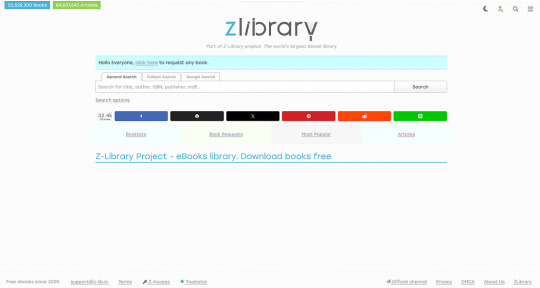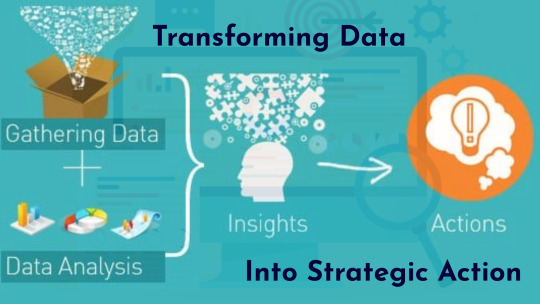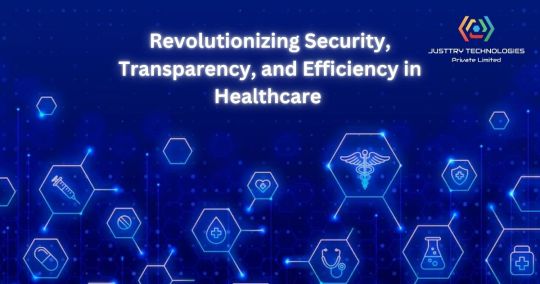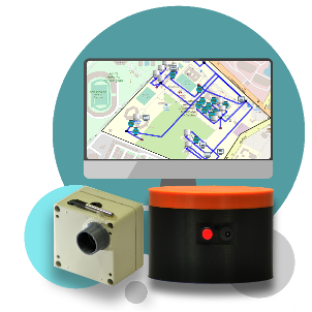#Revolutionizing Distribution Operations
Explore tagged Tumblr posts
Text
Revolutionizing Distribution Operations: Sigzen Technologies and ERPNext
In the contemporary business sphere, Sigzen Technologies spearheads a transformative era by introducing ERPNext’s Distribution module. This dynamic duo reshapes the distribution landscape by infusing efficiency, precision, and agility into the core of operational processes. Modernizing Distribution Dynamics Navigating the intricate nexus of sales, procurement, inventory, and logistics demands a…

View On WordPress
#Digital Revolution#Distribution Efficiency#Distribution Management#Efficiency#ERP Solutions#ERPNext Advantages#Industry Disruption#Revolutionizing Distribution Operations#Supply Chain#Tech Innovation#Technology Integration
1 note
·
View note
Text
One of the Greatest Inventions of All Time

Nikola Tesla has many revolutionary inventions to his credit, but he is best known for his pioneering work in the development and promotion of alternating current (AC) electrical systems. Tesla's innovations in AC technology revolutionized the generation, transmission, and distribution of electrical power, becoming the foundation for the modern electrical power systems that we use today.
There is a common misconception made that Tesla was the first to invent, or discover, AC, but this is not true. It is well-known that Hippolyte Pixii was the first to discover AC in 1832. Pixii was an instrument maker from Paris who built an early form of an alternating current electrical generator (based on the principle of electromagnetic induction discovered by Michael Faraday), and thus started a new industry in power transmission. Tesla was not the first to discover or invent an AC motor, but he was the first to invent a practical AC induction motor with commercial value that could outperform all other motors. It must be noted that Italian inventor Galileo Ferraris also invented an induction motor similar to Tesla's, but it had no commercial value, and he even admitted himself that it was useless. Tesla's induction motor operates on the principle of electromagnetic induction, properly utilizing a rotating magnetic field that induces a current in a stationary conductor, resulting in rotational motion. The utilization of the rotating magnetic field makes the motor more simple, robust, versatile, efficient, and cost effective in that it has less moving parts reducing the likelihood of mechanical failure (as was common in other motors).

Tesla's induction motor became a fundamental component in the field of electrical engineering and is used today in various applications, being one of the most widely used devices in the world. The motors play a crucial role in transmitting electrical power to homes and businesses. They are commonly used in power generation plants to convert mechanical energy into electrical energy, which is then transmitted through the power grid for distribution to various locations. Induction motors are also widely employed in appliances and machinery within homes and businesses for various applications. These applications include conveyor systems, hoists, cranes, lifts, pumps, fans, ventilation systems, compressors, manufacturing machinery, wind turbines, washing machines, refrigerators, garbage disposals, microwaves, dishwashers, vacuums, air conditioners, robotics, electric vehicles, trains, power tools, printers, etc. Basically, anything that requires a spinning action for power.
The induction motor is widely considered one of the most important inventions in the history of electrical engineering. Its importance lies in its transformative impact on industries, its efficiency and reliability, and its role in the broader electrification of society.

#nikola tesla#science#history#invention#discovery#induction motor#electricity#power#goat#ahead of his time#ahead of our time
156 notes
·
View notes
Text

Astrophysicists use echoes of light to illuminate black holes
A team of astrophysicists, led by scholars from the Institute for Advanced Study, has developed an innovative technique to search for black hole light echoes. Their novel method, which will make it easier for the mass and the spin of black holes to be measured, represents a major step forward, since it operates independently of many of the other ways in which scientists have probed these parameters in the past.
The research, published today in The Astrophysical Journal Letters, introduces a method that could provide direct evidence of photons circling black holes due to an effect known as “gravitational lensing.”
Gravitational lensing occurs when light passes near a black hole and its path is bent by the black hole’s strong gravitational field. The effect allows the light to take multiple paths from a source to an observer on Earth: some light rays might follow a direct route while others could loop around the black hole once—or multiple times—before reaching us. This means that light from the same source can arrive at different times, resulting in an “echo.”
“That light circles around black holes, causing echoes, has been theorized for years, but such echoes have not yet been measured,” says the study's lead author, George N. Wong, Frank and Peggy Taplin Member in the Institute’s School of Natural Sciences and Associate Research Scholar at the Princeton Gravity Initiative at Princeton University. “Our method offers a blueprint for making these measurements, which could potentially revolutionize our understanding of black hole physics.”
The technique allows the faint echo signatures to be isolated from the stronger direct light captured by well-known interferometric telescopes, such as the Event Horizon Telescope. Both Wong and one of his co-authors, Lia Medeiros, Visitor in the Institute’s School of Natural Sciences and NASA Einstein Fellow at Princeton University, have worked extensively as part of the Event Horizon Telescope Collaboration.
To test their technique, Wong and Medeiros, working alongside James Stone, Professor in the School of Natural Sciences, and Alejandro Cárdenas-Avendaño, Feynman Fellow at Los Alamos National Laboratory and former Associate Research Scholar at Princeton University, ran high-resolution simulations which took tens of thousands of “snapshots” of light traveling around a supermassive black hole akin to that at the center of the M87 galaxy (M87*), which is located around 55 million light-years away from Earth. Using these simulations, the team demonstrated that their method could directly infer the echo delay period in the simulated data. They believe that their technique will be applicable to other black holes, in addition to M87*.
“This method will not only be able to confirm when light orbiting a black hole has been measured, but will also provide a new tool for measuring the black hole’s fundamental properties,” explains Medeiros.
Understanding these properties is important. “Black holes play a significant role in shaping the evolution of the universe,” says Wong. “Even though we often focus on how black holes pull things in, they also eject large amounts of energy into their surroundings. They play a major role in the development of galaxies, affecting how, when, and where stars form, and helping to determine how the structure of the galaxy itself evolves. Knowing the distribution of black hole masses and spins, and how the distribution changes over time, greatly enhances our understanding of the universe.”
Measuring the mass or spin of a black hole is tricky. The nature of the accretion disk, namely the rotating structure of hot gas and other matter spiraling inward towards a black hole, can “confuse” the measurement, Wong notes. Light echoes provide an independent measurement of the mass and spin, however, and having multiple measurements allows us to produce an estimate for those parameters “that we can really believe in,” states Medeiros.
Detecting light echoes might also enable scientists to better test Albert Einstein’s theories of gravity. “Using this technique, we might find things that make us think ‘hey, this is weird!’” adds Medeiros. “The analysis of such data could help us to verify whether black holes are indeed consistent with general relativity.”
The team’s results suggest that it may be possible to detect echoes with a pair of telescopes—one on Earth and one in space—working together to perform what can be described as “very long baseline interferometry.” Such an interferometric mission need only be “modest,” states Wong. Their technique provides a tractable, practical method to gather important, reliable information about black holes.
About the Institute
The Institute for Advanced Study has served as one of the leading independent centers for theoretical research and intellectual inquiry since its establishment in 1930, advancing the frontiers of knowledge across the sciences and humanities. From founding IAS Faculty Albert Einstein, Erwin Panofsky, and John von Neumann to influential figures Emmy Noether, George Kennan, and J. Robert Oppenheimer to the foremost thinkers of the present, IAS is dedicated to enabling independent inquiry and fundamental discovery.
Each year, the Institute welcomes more than 250 of the world’s most promising post-doctoral researchers and scholars who are selected and mentored by a permanent Faculty, all of whom are preeminent leaders in their fields. Among present and past Faculty and Members, there have been 36 Nobel Laureates, 46 of the 64 Fields Medalists, and 23 of the 27 Abel Prize Laureates, as well as winners of the Turing Award; the Pulitzer Prize in History; the Wolf, Holberg, and Kluge prizes; and many MacArthur and Guggenheim fellows, among other honors.
IMAGE: Due to gravitational lensing, the photons from a single flash of light near a black hole follow winding paths. Some follow the trajectory of the blue line, where they take a direct path to the observer. Others orbit around the black hole once, following the path of the red dashed line. Others still orbit the black hole twice following the green dashed line. Because the different paths all have different time delays, the photons arrive one after another in sequence, and the original flash of light will appear to echo. Credit George N. Wong
#science#space#physics#astronomy#news#nasa#astrophysics#spacetimewithstuartgary#esa#starstuff#black holes
10 notes
·
View notes
Text
Z Library Revolutionizing Access to Books and Articles Online
In the digital era, access to information is pivotal, and Z Library is at the forefront of this revolution. Offering an extensive range of books and articles online, Z Library is changing how we access and consume literature and scholarly materials. This article explores the features, benefits, and significance of Z Library in the realm of digital libraries.
What is Z Library?
Z Library is a prominent online library providing free access to a vast collection of books and articles. It caters to a wide audience, including students, educators, researchers, and casual readers. With its user-friendly interface and extensive database, Z Library has become a go-to resource for millions worldwide.
The Extensive Collection
The platform boasts an impressive range of materials, encompassing various genres, languages, and subjects. This diverse collection ensures that Z Lib can meet the needs of virtually any reader.

Z Library distinguishes itself with its straightforward and accessible interface. Users can effortlessly search, access, and download materials, making the platform suitable for all, regardless of technical proficiency.
The Impact of Z Library
Z Library’s impact on readers and the publishing industry is significant. By providing free access to books and articles, it democratizes information and fosters a culture of learning and exploration.
For Readers and Learners
For individuals seeking knowledge or entertainment, Z-Access removes barriers to access the library. Whether it’s a rare academic paper or a popular novel, users can find it on Z Library without cost.
On the Publishing Industry
While Z Library's model is revolutionary, it also raises questions about copyright and the sustainability of the publishing industry. Its approach challenges traditional publishing models and sparks discussions about the future of book distribution and access.
Navigating Legal and Ethical Considerations
The operation of platforms like Libgen is not without controversy. Balancing the free distribution of information with copyright laws and authors' rights is a complex issue. Z Library operates in a gray area, navigating these legal and ethical challenges.
The Debate on Free Access vs. Copyright
Z Library’s model has sparked debate on the balance between free access to information and protecting the rights of authors and publishers. This ongoing discussion is crucial in shaping the future landscape of digital information access.
Conclusion
Z Library is more than just an online repository of books and articles; it’s a gateway to knowledge and a catalyst for change in the digital age. While it presents challenges and sparks debate, its contribution to the democratization of information cannot be overlooked. Z Library continues to play a crucial role in shaping the future of reading, learning, and information access.
9 notes
·
View notes
Text
Innovations in Electrical Switchgear: What’s New in 2025?

The electrical switchgear industry is undergoing a dynamic transformation in 2025, fueled by the rapid integration of smart technologies, sustainability goals, and the growing demand for reliable power distribution systems. As a key player in modern infrastructure — whether in industrial plants, commercial facilities, or utilities — switchgear systems are becoming more intelligent, efficient, and future-ready.
At Almond Enterprise, we stay ahead of the curve by adapting to the latest industry innovations. In this blog, we’ll explore the most exciting developments in electrical switchgear in 2025 and what they mean for businesses, contractors, and project engineers.
Rise of Smart Switchgear
Smart switchgear is no longer a futuristic concept — it’s a necessity in 2025. These systems come equipped with:
IoT-based sensors
Real-time data monitoring
Remote diagnostics and control
Predictive maintenance alerts
This technology allows for remote management, helping facility managers reduce downtime, minimize energy losses, and detect issues before they become critical. At Almond Enterprise, we supply and support the integration of smart switchgear systems that align with Industry 4.0 standards.
2. Focus on Eco-Friendly and SF6-Free Alternatives
Traditional switchgear often relies on SF₆ gas for insulation, which is a potent greenhouse gas. In 2025, there’s a significant shift toward sustainable switchgear, including:
Vacuum Interrupter technology
Air-insulated switchgear (AIS)
Eco-efficient gas alternatives like g³ (Green Gas for Grid)
These options help organizations meet green building codes and corporate sustainability goals without compromising on performance.
3. Wireless Monitoring & Cloud Integration
Cloud-based platforms are transforming how switchgear systems are managed. The latest innovation includes:
Wireless communication protocols like LoRaWAN and Zigbee
Cloud dashboards for real-time visualization
Integration with Building Management Systems (BMS)
This connectivity enhances control, ensures quicker fault detection, and enables comprehensive energy analytics for large installations
4. AI and Machine Learning for Predictive Maintenance
Artificial Intelligence is revolutionizing maintenance practices. Switchgear in 2025 uses AI algorithms to:
Predict component failure
Optimize load distribution
Suggest optimal switchgear settings
This reduces unplanned outages, increases safety, and extends equipment life — particularly critical for mission-critical facilities like hospitals and data centers.
5. Enhanced Safety Features and Arc Flash Protection
With increasing focus on workplace safety, modern switchgear includes:
Advanced arc flash mitigation systems
Thermal imaging sensors
Remote racking and switching capabilities
These improvements ensure safer maintenance and operation, protecting personnel from high-voltage hazards.
6. Modular & Scalable Designs
Gone are the days of bulky, rigid designs. In 2025, switchgear units are:
Compact and modular
Easier to install and expand
Customizable based on load requirements
Almond Enterprise supplies modular switchgear tailored to your site’s unique needs, making it ideal for fast-paced infrastructure developments and industrial expansions.
7. Global Standardization and Compliance
As global standards evolve, modern switchgear must meet new IEC and IEEE guidelines. Innovations include:
Improved fault current limiting technologies
Higher voltage and current ratings with compact dimensions
Compliance with ISO 14001 for environmental management
Our team ensures all equipment adheres to the latest international regulations, providing peace of mind for consultants and project managers.
Final Thoughts: The Future is Electric
The switchgear industry in 2025 is smarter, safer, and more sustainable than ever. For companies looking to upgrade or design new power distribution systems, these innovations offer unmatched value.
At Almond Enterprise, we don’t just supply electrical switchgear — we provide expert solutions tailored to tomorrow’s energy challenges. Contact us today to learn how our cutting-edge switchgear offerings can power your future projects.
6 notes
·
View notes
Text
From Burnout to Balance: Is Project Resource Planning the Ultimate Solution?

Burnout is no longer a silent intruder in the workplace, it’s a widespread disruption, silently eroding productivity, morale, and innovation. With increasing pressure to meet deadlines, deliver quality outcomes, and align with dynamic goals, teams often find themselves trapped in chaotic workflows. The divide between what is expected and what is delivered continues to grow. This is where a shift towards project resource planning has emerged as a beacon of stability.
A structured approach to resource distribution isn’t merely about scheduling—it’s about restoring order, clarity, and purpose. It offers a comprehensive overview of skills, schedules, and assigned roles. When implemented effectively, it transforms a fractured process into a seamless operation.
The Root Cause of Burnout Lies in Poor Planning
Workforce exhaustion often results from uneven workloads, poorly defined roles, and misaligned priorities. Without visibility into task ownership and team capacity, employees juggle conflicting objectives, causing fatigue and disengagement. Leadership, in such scenarios, often reacts to symptoms rather than solving the underlying problem.

A well-devised planning system allows businesses to align their human capital with real-time project needs. It enables early detection of overload, bottlenecks, and inefficiencies. More importantly, it allows for a preventive, not reactive, managerial style.
Clarity Creates Confidence
When people know what they’re doing, why they’re doing it, and how their contributions affect the bigger picture, confidence and accountability naturally increase. Task transparency reduces confusion and eliminates duplicate efforts. A clearly mapped schedule lets employees manage time more effectively, promoting both efficiency and mental well-being.
Resource forecasting through intelligent tools supports realistic deadlines and reduces rushed outputs. Balanced task assignment nurtures sustained momentum and steady performance without burnout. This clarity becomes the silent catalyst behind exceptional team dynamics.
Enhancing Performance with Technology
Technology enables precision. Gone are the days when Excel sheets dictated workforce allocation. Today’s systems offer intelligent dashboards, behaviour analytics, and workload forecasting—all in real-time. Modern tools serve as operational command centers where strategy, execution, and evaluation coexist seamlessly.

Key Platforms That Reinforce This Shift
EmpMonitor stands out as a workforce intelligence platform that provides real-time employee tracking, productivity breakdowns, and application usage analytics. Its strength lies in mapping behavioural patterns alongside performance. Automated timesheets and screen activity logs, ensure that resource management decisions are data-driven and transparent. EmpMonitor excels in both in-office and remote team settings, offering flexible yet detailed oversight.
Hubstaff contributes to this ecosystem with its GPS-enabled framework, making it well-suited for mobile teams and field-based activities. It tracks time, location, and task completion metrics, allowing for accurate billing and service delivery analysis.
Desk Time focuses on simplicity and intuitive design. It’s suitable for creative and agile teams that prioritize clean time-logging and visual timeline management.
Together, these platforms showcase how digital tools revolutionize resource planning with actionable intelligence and minimal manual effort.
Turning Data into Action
One of the most profound benefits of structured resource planning lies in turning raw data into strategy. By monitoring time investment, engagement trends, and workflow pacing, leaders can adapt schedules, reallocate resources, or restructure priorities before productivity drops.

More than numbers, it’s about understanding human bandwidth. This employee wellbeing strategy leads to smarter delegation, increased autonomy, and performance-based adjustments—all essential for a healthy work environment.
Building a Culture of Preparedness
Effective planning isn’t just operational—it’s cultural. It breeds discipline, encourages ownership, and ensures employees are equipped to deliver without overstretching. With real-time insights, feedback becomes continuous rather than occasional. It also supports upskilling opportunities by revealing gaps where intervention is required.
By embedding structure into everyday functions, teams become more responsive and less reactive. The culture shifts from chaotic urgency to composed delivery.
You can also watch : How to Use Live Screen Monitoring in EmpMonitor | Step-by-Step Guide
youtube
Conclusion: The Balance Blueprint
Balance in today’s professional landscape stems not from lowered aspirations, but from strategic and refined execution. Organizations that synchronize effort with available capacity tend to achieve higher productivity and demonstrate greater resilience. With the right structural approach, maintaining equilibrium becomes both attainable and enduring.
The integration of project resource planning allows for thoughtful decision-making that respects both business goals and human limits. It’s not merely a managerial practice—it’s the framework for organizational health. For teams fatigued by inconsistency and overwhelmed by misalignment, this approach marks the transition from burnout to balance.
In a fast-paced world, the organizations that thrive will not be those that push harder, but those that plan smarter—with clarity, control, and compassion.
#resource planning#project planning#project resource management#project resource planner#project resourcing#Youtube
2 notes
·
View notes
Text
How Small and Mid-Sized Engineering Firms Can Benefit from ERP
In today’s competitive business landscape, manufacturers and engineering companies in India are under constant pressure to improve efficiency, reduce costs, and enhance productivity. The adoption of ERP for manufacturing companies in India has become more than just a trend—it is a necessity for survival and growth. Manufacturing ERP software in India is specifically designed to address the unique challenges faced by the industry, offering seamless integration, automation, and data-driven decision-making capabilities.

If you are an engineering or manufacturing business looking to streamline your operations, this blog will help you understand why ERP software for engineering companies in India is essential and how choosing the best ERP for the engineering industry can revolutionize your operations.
Why ERP is Essential for Manufacturing and Engineering Companies
1. Streamlining Operations and Enhancing Efficiency
One of the biggest challenges faced by manufacturing and engineering companies is managing various processes such as inventory, procurement, production, and distribution. Manufacturing ERP software in India centralizes data, enabling real-time monitoring and control over every aspect of the business. This eliminates redundant tasks, reduces manual errors, and improves efficiency.
2. Improved Supply Chain Management
A well-integrated ERP system ensures smooth coordination with suppliers, vendors, and distributors. With ERP for manufacturing companies in India, businesses can track raw materials, monitor supplier performance, and optimize procurement processes, reducing delays and ensuring a seamless supply chain.
3. Enhanced Data-Driven Decision Making
With access to real-time data analytics and comprehensive reporting, ERP software for engineering companies in India empowers businesses to make informed decisions. Managers can analyze production trends, forecast demand, and identify areas for improvement, leading to better business outcomes.
4. Cost Reduction and Higher Profitability
Automation of processes helps in minimizing waste, reducing operational costs, and increasing profitability. The best ERP for the engineering industry ensures resource optimization by tracking inventory levels, reducing excess stock, and eliminating inefficiencies in production planning.
5. Compliance and Quality Control
Manufacturers must adhere to strict industry standards and regulatory requirements. Manufacturing ERP software in India helps in maintaining compliance by providing documentation, audit trails, and quality control measures, ensuring that all products meet industry regulations.
Key Features of the Best ERP for Engineering Industry
Choosing the right ERP solution is crucial for achieving maximum benefits. Here are some key features to look for in an ERP software for engineering companies in India:
Comprehensive Production Planning & Control – Ensures seamless coordination between different production units.
Inventory & Material Management – Tracks stock levels, raw materials, and procurement processes efficiently.
Financial Management – Integrates accounting, payroll, and financial reporting for better fiscal control.
Supply Chain Management – Enhances supplier relationships and improves procurement efficiency.
Customer Relationship Management (CRM) – Manages customer interactions, sales pipelines, and service requests.
Business Intelligence & Reporting – Provides real-time insights for strategic decision-making.
Scalability & Customization – Adapts to the growing needs of your business with modular functionalities.
Top ERP Software Providers in India
India is home to some of the top ERP software providers, offering advanced solutions for engineering and manufacturing businesses. Companies like Shantitechnology (STERP) have emerged as leaders in providing industry-specific ERP solutions that cater to the unique requirements of manufacturing and engineering firms.
Why Choose STERP?
STERP is one of the top ERP software providers in India, offering customized ERP solutions specifically designed for the engineering and manufacturing industries. Here is why STERP stands out:
Industry-Specific Solutions – Tailored to meet the challenges of the manufacturing and engineering sectors.
Cloud & On-Premise Options – Flexible deployment models to suit different business needs.
User-Friendly Interface – Easy to use, with intuitive dashboards and real-time analytics.
Excellent Customer Support – Dedicated support teams for implementation and ongoing assistance.
Scalable Solutions – Designed to grow with your business, ensuring long-term usability and return on investment.
How to Implement ERP for Maximum Success
Step 1: Assess Business Needs
Understand your business requirements and identify key areas that need improvement. Choose a solution that aligns with your industry needs.
Step 2: Choose the Right ERP Software
Selecting the best ERP for the engineering industry involves comparing features, scalability, pricing, and vendor support.
Step 3: Customization & Integration
Ensure that the ERP system integrates seamlessly with your existing tools and is customizable to fit your unique business processes.
Step 4: Training & Support
Invest in training programs to ensure that your team is comfortable using the new system. Opt for a provider that offers continuous support and upgrades.
Step 5: Monitor & Optimize
Post-implementation, continuously monitor the system’s performance, gather feedback, and make necessary optimizations to enhance efficiency.
Future Trends in ERP for Manufacturing and Engineering
The ERP landscape is evolving rapidly, with emerging trends shaping the future of ERP for manufacturing companies in India. Some key trends to watch include:
AI & Machine Learning Integration – Automating predictive maintenance and process optimization.
Cloud-Based ERP Solutions – Offering flexibility, remote accessibility, and cost savings.
IoT-Enabled ERP – Enhancing real-time tracking of production and inventory.
Mobile ERP – Allowing on-the-go access for better decision-making.
Blockchain for Supply Chain Management – Ensuring transparency and security in transactions.
Conclusion
Investing in ERP software for engineering companies in India is no longer an option—it is a necessity for businesses looking to stay ahead in the competitive market. Whether you are a small manufacturer or a large-scale engineering firm, having the best ERP for the engineering industry can drive efficiency, improve decision-making, and enhance overall profitability.
With industry leaders like Shantitechnology (STERP) offering cutting-edge solutions, businesses can achieve digital transformation effortlessly. As one of the top ERP software providers in India, STERP continues to empower manufacturing and engineering companies with tailored ERP solutions.
Are you ready to revolutionize your business with ERP? Contact STERP today and take the first step towards seamless automation and unmatched efficiency!
#ERP software for engineering companies#Engineering ERP Software Company#ERP solution providers#ERP software companies#ERP software for engineering companies in India#Best ERP for engineering industry#India#Gujarat#Maharashtra
4 notes
·
View notes
Text
STON.fi: A Game-Changer in Decentralized Finance

Decentralized exchanges (DEXs) have revolutionized the way people trade cryptocurrencies, offering greater control and eliminating intermediaries. But despite these advantages, most DEXs lack structured governance, sustainability, and meaningful user incentives. They allow users to swap tokens, but few provide a well-designed system that ensures long-term growth and community participation.
STON.fi goes beyond the conventional DEX model by integrating a governance-driven ecosystem where users are not just traders but active participants in shaping the platform’s evolution.
Why Traditional DEX Models Fall Short
Most decentralized exchanges focus on trade execution and liquidity, ensuring seamless token swaps at competitive rates. However, this model has limitations:
Lack of true decentralization – While transactions are trustless, decision-making is often concentrated in the hands of core developers or liquidity providers.
Weak incentive structures – Liquidity providers are rewarded with fees, but there’s little incentive for long-term engagement.
Limited community involvement – Users participate in trading, but they have no influence over governance or platform development.
These challenges highlight the need for a more sustainable, user-centered approach to DeFi—one that STON.fi is actively solving.
STON.fi’s Unique Approach to Decentralization
STON.fi is built on a foundation of governance, incentives, and user engagement. Instead of just offering a place to swap assets, the platform ensures that users have a direct stake in its success through a dual-layered system:
1. Arkenston – A True Governance Model
Governance in DeFi often ends up being either too centralized or too fragmented, leading to inefficiencies and lack of transparency. STON.fi addresses this by introducing Arkenston, a governance framework that enables token holders to make key decisions, such as:
Voting on protocol upgrades.
Adjusting trading fees and liquidity rewards.
Allocating resources to new platform developments.
This governance model ensures that STON.fi evolves based on community consensus rather than decisions made by a select few. It creates a transparent and sustainable system where users collectively determine the platform’s future.
2. Gemston – A Reward System That Drives Engagement
A strong governance structure is important, but sustained participation is what keeps a decentralized platform thriving. That’s where Gemston, STON.fi’s rewards system, comes in.
Unlike traditional DEX models that only reward liquidity providers, Gemston distributes incentives across multiple user activities, including:
Trading and staking rewards to encourage long-term participation.
Reduced trading fees for active users, making the platform more cost-efficient.
Special benefits for community contributors who help enhance the platform’s ecosystem.
By rewarding users beyond just providing liquidity, STON.fi creates an engaged and self-sustaining community where participation is both beneficial and necessary.
What Makes STON.fi Stand Out
Most decentralized exchanges operate on a linear model—users trade, liquidity providers earn, and the cycle repeats. STON.fi disrupts this cycle by introducing a circular economy where governance and incentives feed into each other:
Governance ensures the platform evolves based on community-driven decisions.
Incentives encourage continuous user engagement, reinforcing the strength of the governance system.
The result is a DEX that is not only decentralized in trading but also in decision-making and growth.
The Future of DeFi is Community-Led
Decentralized finance is evolving, and the next generation of DEXs will be defined by more than just low fees and liquidity pools. The real game-changers will be platforms that:
Give users a say in governance.
Provide financial incentives for long-term participation.
Build sustainable ecosystems rather than short-term profit models.
STON.fi is leading this shift by creating a DEX that is owned, governed, and sustained by its users. As decentralized finance matures, projects that prioritize governance and community participation will set the standard for the industry—and STON.fi is already ahead of the curve.
3 notes
·
View notes
Text
The 6 Roles of Blockchain Technology in Pharma’s Future

Introduction
The pharmaceutical industry is undergoing a digital transformation, and blockchain technology is at the forefront of this revolution. Traditional challenges such as counterfeit drugs, regulatory inefficiencies, clinical trial fraud, and data breaches have long plagued the sector. Blockchain, with its decentralized and tamper-proof nature, offers solutions that can enhance security, transparency, and operational efficiency.
As blockchain development service providers continue refining solutions for pharma, companies are beginning to adopt this technology to streamline supply chains, enhance patient data security, and automate compliance. This article explores six critical roles that blockchain will play in shaping the future of the pharmaceutical industry.
1. Securing the Pharmaceutical Supply Chain
Eliminating Counterfeit Drugs
Counterfeit medications pose a significant threat to global health, contributing to thousands of deaths annually. The World Health Organization (WHO) estimates that one in ten medical products in low- and middle-income countries is substandard or falsified.
End-to-End Traceability
Blockchain technology enables a fully transparent supply chain, where each transaction is recorded in an immutable ledger. This ensures that every stakeholder—from manufacturers to pharmacists—can verify a drug’s authenticity in real-time.
Real-Time Verification
With blockchain-based tracking, patients, healthcare providers, and regulatory agencies can instantly verify the legitimacy of medications. Leading pharmaceutical companies like Pfizer and Roche are already exploring blockchain to secure drug distribution and eliminate counterfeit products from the market.
2. Enhancing Drug Safety and Regulatory Compliance
Immutable Drug Records
Regulatory compliance in the pharmaceutical industry requires strict adherence to safety protocols, but traditional record-keeping methods are prone to errors and fraud. Blockchain ensures that all drug-related data, including batch numbers, manufacturing dates, and storage conditions, are permanently recorded and cannot be altered.
Automated Compliance Monitoring
Smart contracts—self-executing digital agreements stored on the blockchain—can automate compliance checks, ensuring that drugs meet safety regulations before they reach the market. This reduces human error and enhances accountability.
Rapid Recalls and Alerts
When safety concerns arise, blockchain enables instant notifications and targeted recalls. Instead of relying on slow, paper-based tracking systems, companies can pinpoint affected batches within seconds, reducing risks to patients and minimizing financial losses.
3. Revolutionizing Clinical Trials and Research
Data Integrity and Security
Clinical trials are the foundation of medical innovation, but they are often plagued by fraud and inefficiencies. Blockchain ensures that trial data is immutable, preventing manipulation or selective reporting. This guarantees transparency and fosters trust in research findings.
Streamlined Patient Consent
Informed consent is a crucial aspect of clinical trials, yet traditional methods often lack security and efficiency. Blockchain-based smart contracts can automate consent management, ensuring that patients have full control over their participation while reducing administrative burdens for researchers.
Faster Drug Development
By securely sharing trial data among researchers, pharmaceutical companies, and regulatory agencies, blockchain accelerates the drug development process. Faster access to verified data can lead to quicker approvals, ultimately bringing life-saving medications to patients sooner.
4. Enabling Secure and Efficient
Automated Payments with Smart Contracts
The pharmaceutical industry involves complex financial transactions between manufacturers, insurers, healthcare providers, and distributors. Blockchain simplifies these transactions by using smart contracts to automate payments based on pre-set conditions.
Reduced Fraud and Corruption
Traditional financial systems in the pharma sector are susceptible to fraud and inefficiencies. Blockchain’s decentralized ledger eliminates intermediaries, ensuring transparent and corruption-free transactions.
DeFi in Pharma
Decentralized finance (DeFi) applications powered by blockchain could revolutionize pharmaceutical funding. Companies can leverage tokenized assets to raise funds for research and development, bypassing traditional banking limitations.
5. Improving Patient Data Security
Decentralized Electronic Health Records (EHR)
Patient data is often stored in centralized databases, making it vulnerable to cyberattacks. Blockchain provides a decentralized and encrypted framework where patients control their health records, granting access only to authorized healthcare providers.
Seamless Data Sharing
Healthcare providers often struggle with interoperability issues, leading to treatment delays. Blockchain allows for secure, real-time data sharing across hospitals, research institutions, and insurance providers, ensuring a more efficient healthcare ecosystem.
Enhanced Privacy Protections
With data breaches on the rise, blockchain’s encryption protocols enhance patient privacy, reducing the risk of identity theft and unauthorized access to sensitive medical information.
6. The Future of Blockchain in Pharma
AI and Blockchain Integration
The combination of artificial intelligence (AI) and blockchain could further optimize drug manufacturing, predicting supply and demand trends to reduce waste and inefficiencies.
Tokenized Incentives
Blockchain could introduce tokenized rewards for patients participating in clinical trials, encouraging greater involvement and leading to more diverse research data.
Decentralized Research Collaboration
Pharmaceutical companies, universities, and biotech startups could collaborate more efficiently using blockchain-based decentralized networks. This would eliminate data silos and accelerate groundbreaking medical discoveries.
Conclusion
Blockchain technology is revolutionizing the pharmaceutical industry, offering unprecedented levels of security, efficiency, and transparency. From securing supply chains and automating compliance to enhancing patient data security and accelerating drug development, blockchain is set to become an essential pillar of the pharma ecosystem. As blockchain development service providers continue to innovate, pharmaceutical companies that embrace this technology will be better positioned to lead in an increasingly digital and decentralized future. The adoption of blockchain is not just a technological upgrade—it is a necessary evolution for a safer, more efficient, and patient-centric pharmaceutical industry.
#blockchain#blockchain development services#blockchain development#blockchain in healthcare#supply chain management#supply chain#technologies#development
2 notes
·
View notes
Text
Blockchain Payments: The Game Changer in the Finance Industry
The finance industry has experienced a remarkable transformation over the past few years, with blockchain payments emerging as one of the most groundbreaking innovations. As businesses and individuals increasingly seek secure, transparent, and efficient transaction methods, blockchain technology has positioned itself as a powerful solution that challenges traditional payment systems.
Understanding Blockchain Payments
At its core, blockchain payments utilize decentralized ledger technology (DLT) to facilitate transactions without intermediaries such as banks. Unlike conventional payment systems, which rely on centralized institutions, blockchain operates through a distributed network of nodes that validate and record transactions in an immutable ledger. This decentralized approach ensures greater transparency, security, and efficiency in financial transactions.
Key Benefits of Blockchain Payments
1. Security and Transparency
Blockchain transactions are encrypted and recorded on an immutable ledger, making them highly secure and tamper-proof. The decentralized nature of blockchain ensures that no single entity can alter transaction records, increasing transparency and reducing the risk of fraud.
2. Lower Transaction Costs
Traditional payment methods often involve intermediaries such as banks and payment processors, which charge significant fees for transaction processing. Blockchain payments eliminate the need for intermediaries, resulting in lower transaction costs for businesses and consumers.
3. Faster Cross-Border Transactions
International transactions using traditional banking systems can take days to settle due to multiple intermediaries and regulatory approvals. Blockchain payments, on the other hand, enable near-instant cross-border transactions, enhancing financial inclusivity and reducing delays.
4. Enhanced Accessibility
Blockchain payments provide financial services to individuals and businesses without requiring a traditional bank account. This feature is particularly beneficial for underbanked populations, allowing them to participate in the global economy.

Real-World Applications of Blockchain Payments
E-Commerce and Retail: Merchants are integrating blockchain payment systems to accept cryptocurrencies, offering customers an alternative and secure payment method.
Remittances: Migrant workers can send money to their families without high remittance fees, ensuring more money reaches the recipients.
Supply Chain Management: Blockchain ensures secure and transparent payments between suppliers, manufacturers, and distributors.
Decentralized Finance (DeFi): DeFi platforms leverage blockchain payments for lending, borrowing, and yield farming, providing users with financial services without traditional banks.
How Resmic is Revolutionizing Blockchain Payments?
Resmic is at the forefront of enabling seamless cryptocurrency transactions, empowering businesses to embrace blockchain payments effortlessly. The platform provides a secure and user-friendly payment infrastructure, allowing businesses to accept multiple cryptocurrencies while ensuring compliance with regulatory requirements.
Key Features of Resmic:
Multi-Currency Support: Accepts various cryptocurrencies, enhancing customer flexibility.
Fast Settlements: Near-instant transactions for efficient cash flow management.
Secure Transactions: Robust encryption and decentralized validation for enhanced security.
Seamless Integration: Easy API integration with existing payment systems and e-commerce platforms.
Embracing the Future of Finance
Blockchain payments are reshaping the financial landscape, offering businesses and individuals a more efficient and secure way to transfer value globally. As adoption continues to grow, platforms like Resmic play a crucial role in facilitating this transition. By leveraging blockchain technology, businesses can stay ahead of the curve and unlock new opportunities in the digital economy.
3 notes
·
View notes
Text
Understanding Smart Water Metering: A Comprehensive Guide

Smart water metering is revolutionizing how individuals, businesses, and municipalities manage water usage. With its advanced technology, it provides real-time data, improves efficiency, and promotes sustainable water consumption practices. This blog delves into the essentials of smart water metering, covering critical topics, challenges, step-by-step implementation, a real-life case study, and a concluding overview.
What is Smart Water Metering?
Smart water metering refers to the use of advanced metering systems that monitor water consumption in real-time and transmit data to consumers and service providers. Unlike traditional water meters, smart meters are equipped with wireless communication technologies, offering a more interactive and efficient water management system.
Unique Topics Everyone Should Know About Smart Water Metering
1. How Smart Water Meters Work
Smart water meters rely on sensors and communication networks to collect and transmit data. These meters often use IoT (Internet of Things) technology, connecting them to centralized data systems for seamless operation.
Key Features:
Real-time monitoring
Leak detection
Usage analytics
2. Benefits of Smart Water Metering
Smart water metering offers multiple advantages:
Enhanced Accuracy: Reduces billing errors.
Water Conservation: Identifies wasteful practices.
Convenience: Provides users with detailed consumption reports.
Cost Savings: Promotes efficient water use, lowering bills.
3. Applications of Smart Water Meters
Smart water meters are used across various sectors:
Residential Areas: Encouraging homeowners to adopt water-saving habits.
Commercial Buildings: Monitoring high water usage.
Municipal Systems: Managing city-wide water distribution.
Challenges in Smart Water Metering
While smart water metering presents many benefits, it also has challenges:
1. High Initial Investment
The cost of installing smart meters can be prohibitive, especially for large-scale projects.
2. Data Security Concerns
Since smart meters rely on digital communication, they are susceptible to cyber threats.
3. Infrastructure Requirements
Implementing smart water meters requires robust communication networks and integration with existing systems.
4. Resistance to Change
Some users may resist transitioning from traditional meters due to unfamiliarity or skepticism.
Step-by-Step Guide to Implementing Smart Water Metering
Step 1: Assess Requirements
Evaluate the specific needs of the property or area. Consider water usage patterns and infrastructure compatibility.
Step 2: Choose the Right Technology
Select smart water meters that align with your objectives, such as those offering real-time analytics or advanced leak detection.
Step 3: Plan the Deployment
Create a comprehensive plan outlining the installation process, data management protocols, and training requirements.
Step 4: Install and Integrate
Install the smart water meters and integrate them with your existing water management systems.
Step 5: Monitor and Optimize
Regularly monitor the performance of the smart meters and optimize their settings to maximize efficiency.
Case Study: Smart Water Metering in Urban Communities
Background
A mid-sized city faced challenges with water waste and inaccurate billing due to outdated water meters. The local government decided to implement smart water metering across residential and commercial zones.
Implementation
Conducted a city-wide assessment to identify high-priority areas.
Chose smart meters with real-time data transmission and leak detection capabilities.
Trained staff and launched an awareness campaign to educate residents.
Results
Reduction in Water Waste: Decreased water loss by 25% within the first year.
Improved Billing Accuracy: Resolved 90% of previous billing disputes.
Enhanced User Engagement: Residents actively monitored and reduced their water usage.
Conclusion
Smart water metering represents a significant step toward efficient and sustainable water management. By providing real-time insights, reducing waste, and promoting conservation, it benefits individuals, businesses, and municipalities alike. Despite initial challenges such as cost and infrastructure needs, the long-term advantages outweigh the hurdles. Adopting smart water metering not only ensures better resource management but also fosters a culture of accountability and sustainability.
Whether you are a homeowner looking to monitor your water usage or a city planner aiming to optimize municipal water distribution, smart water metering is the future of water management. Start exploring your options today to make a difference for tomorrow.
By implementing the concepts discussed, leveraging the step-by-step guide, and learning from successful case studies, you can effectively embrace the revolution of smart water metering. Together, we can work towards a smarter and more sustainable future.
2 notes
·
View notes
Text
3 Ways Software Can Revolutionize Your Distribution Strategy.
In today's fiercely competitive business environment, efficient distribution can make or break a company. Customers demand fast, reliable, and cost-effective delivery, and businesses are under constant pressure to optimize their operations to meet these expectations. Distribution management software has emerged as a powerful tool to help companies streamline their distribution processes, reduce costs, and enhance customer satisfaction.
The Power of Integrated Software
While distribution management software alone can provide significant benefits, integrating it with other business systems, such as sales management software and scheme management software, can create a truly synergistic effect. This integrated approach allows for seamless information flow, improved visibility, and enhanced decision-making across the organization.
1. Inventory Management: From Reactive to Proactive
Effective inventory management is the cornerstone of a successful distribution strategy. Distribution management software provides real-time visibility into inventory levels across all locations, eliminating the need for time-consuming manual stock checks and reducing the risk of costly stockouts and overstocking.
With accurate, up-to-the-minute data on inventory levels, businesses can proactively manage their stock, ensuring they have the right products in the right place at the right time. This not only improves order fulfilment efficiency but also optimizes warehouse space utilization and reduces carrying costs.
Furthermore, advanced distribution management software often includes demand forecasting capabilities. By analyzing historical data and market trends, these systems can predict future demand with greater accuracy, enabling businesses to proactively adjust their procurement and production schedules. This helps prevent stockouts during peak seasons and avoids overstocking during periods of low demand.
2. Order Fulfillment: Speed, Accuracy, and Visibility
Customers in today's fast-paced environment want orders to be fulfilled quickly and reliably. Distribution management software empowers businesses to meet these expectations by automating and optimizing various aspects of the fulfilment process.
By automating order processing, businesses can minimize manual data entry, reduce errors, and accelerate order fulfilment times. This not only improves efficiency but also frees up valuable time for staff to focus on more strategic tasks.
Distribution management software also optimizes delivery routes, taking into account factors such as traffic, delivery windows, and vehicle capacity. This ensures that goods are delivered in the most efficient way possible, minimizing transportation costs and reducing delivery times.
Moreover, distribution management software provides real-time tracking information, allowing customers to monitor the progress of their orders and receive accurate delivery updates. This transparency boosts consumer satisfaction and confidence.
3. Sales and Scheme Management: Driving Revenue and Customer Loyalty
Integrating distribution management software with sales management software and scheme management software creates a powerful platform for driving revenue and building customer loyalty.
Scheme management software enables businesses to create and manage targeted promotions and incentive programs. This allows them to incentivize sales, move inventory, and reward loyal customers. By integrating this with distribution management software, businesses can ensure that promotional items are readily available and that orders are fulfilled efficiently.
Sales management software provides sales teams with the tools they need to manage leads, track opportunities, and close deals more effectively. By integrating this with distribution management software, sales teams can gain visibility into inventory levels and delivery schedules, allowing them to provide accurate information to customers and avoid promising delivery dates that cannot be met.
Furthermore, by combining data from distribution, sales, and scheme management software, businesses can gain valuable insights into customer behaviour, sales trends, and product performance. This data can be used to make informed decisions about pricing, promotions, and product development, ultimately driving revenue growth and improving profitability.
Conclusion
Investing in a comprehensive software solution that encompasses distribution, sales, and scheme management can be a game-changer for businesses of all sizes. By embracing the power of automation, optimization, and data-driven insights, companies can streamline their operations, boost sales, and create a loyal customer base.
2 notes
·
View notes
Text
Why Stretch Wrap is Essential for Safe and Secure Shipping in the UK

Shipping products in the UK has always come with its fair share of challenges—from safeguarding goods during transport, to reducing the risk of damage, to maintaining cost efficiency. However, one standout solution that has revolutionized packaging across industries is stretch wrap. Widely recognized for its versatility and effectiveness, stretch wrap plays a vital role in ensuring safe and secure shipping.
Whether you're in logistics, manufacturing, or retail, stretch wrap provides an indispensable way to protect your items and optimize your shipping process. In this blog, we’ll explore what makes stretch wrap essential, its benefits, and why more businesses in the UK are choosing premium solutions like Tilak Polypack stretch films.
What is Stretch Wrap?
Stretch wrap, also referred to as stretch film or stretch wrap roll, is a highly stretchable plastic film made from polyethylene. Its elastic properties allow the material to tightly and securely wrap items or pallet loads without the need for adhesives or heat. It ensures tight containment, reduces risk of shifting during transport, and protects goods from external elements.
Stretch films are available as hand rolls for manual application and machine rolls for automated operations, making them highly versatile for various packaging needs. Advanced versions now also come with additional features like UV resistance or pre-stretching for added convenience and cost savings.
Popular Use Cases for Stretch Wrap:
Logistics and Warehousing: Streamlining palletized shipping and reducing the risk of goods tipping over.
E-commerce and Retail: Efficiently bundling packages together and securing items for delivery.
Food and Beverage Industries: Safeguarding products against dust, moisture, and contamination.
Manufacturing: Containing irregularly shaped items or bundling loose components.
Why Stretch Wrap is Essential for Shipping in the UK
1. Protection from Damage and Moisture
Shipping involves handling, vibrations, and exposure to external factors like rain or humidity. Stretch wraps act as a durable shield, preventing scratches, dents, dust, and moisture from damaging your goods. For sensitive or fragile products, such as electronics or fabrics, this level of protection is critical.
2. Secure Load Stability
Stretch wrap increases the stability of pallet loads, reducing the risk of shifting or toppling during transport. This makes it a reliable choice for the UK’s busy distribution networks, where goods are constantly loaded and unloaded at warehouses, ports, and delivery hubs.
3. Cost-Effective Packaging Solution
Stretch film is not only affordable but also reduces the need for additional packing materials such as strapping or adhesives. Its high conformability ensures that every inch of material is effectively used, minimizing waste while delivering superior results.
4. Ease of Usage for Businesses of All Sizes
From small retailers to large-scale logistics operations, stretch wrap offers scalability. Hand rolls cater to small packaging needs, while machine stretch wraps are perfect for bulk operations. Combined with its lightweight and recyclable nature, stretch wrap becomes a practical addition to any packaging workflow.
5. Sustainability and Eco Friendliness
Many businesses are now adopting more sustainable practices, and using recyclable stretch wraps is a great way to reduce environmental impact. Choosing eco-friendly options from a provider like Tilak Polypack not only ensures high quality but also supports your business’s green initiatives.
Benefits of Stretch Wrap Rolls
Here are some solid reasons why stretch wrap rolls are the go-to packaging choice for UK businesses:
Secure Packaging: Keeps items tightly bound, preventing them from slipping or shifting.
Damage Prevention: Minimizes the risk of scratches, breaks, or exposure to external elements.
Load Stability: Provides excellent grip for stacked pallets, preventing toppling during transport.
Versatility: Ideal for pallets, irregularly shaped loads, or bundling small items.
Transparency: Easy product identification during inventory checks.
Efficiency: Streamlines packaging and unpacking processes, saving time.
Eco-Friendly: Recyclable materials are available, contributing to sustainability goals.
Customizable Options: Different thicknesses, lengths, and features are available to meet unique needs.
Why Choose Tilak Polypack for Your Stretch Film Needs?
When it comes to premium stretch wraps, Tilak Polypack stands out as a trusted manufacturer and supplier. What makes them the ideal choice for UK businesses? Here’s why:
Top-Quality Products
Tilak Polypack offers durable, high-performance stretch film that meet stringent manufacturing and quality standards. You can trust their products to keep your shipments protected at all times.
Eco-Friendly Solutions
Committed to sustainability, Tilak Polypack provides recyclable and eco-conscious wraps that minimize environmental impact—a win for your business and the planet.
Customizable Packaging Options
With a variety of film thicknesses, lengths, and widths available, Tilak Polypack ensures you receive the perfect solution tailored to your needs.
Global Reach and Trusted Expertise
With over 20+ years of experience and a strong presence in global markets like the US, UK, Australia, and Singapore, Tilak Polypack is a reliable partner for businesses worldwide.
Excellent Customer Support
From choosing the right type of stretch film to resolving queries, their attentive team ensures a seamless experience for all their customers.
2 notes
·
View notes
Text

Chapter IV. Second Period. — Machinery.
“I HAVE witnessed with profound regret the CONTINUANCE OF DISTRESS in the manufacturing districts of the country.”
Words of Queen Victoria on the reassembling of parliament.
If there is anything of a nature to cause sovereigns to reflect, it is that, more or less impassible spectators of human calamities, they are, by the very constitution of society and the nature of their power, absolutely powerless to cure the sufferings of their subjects; they are even prohibited from paying any attention to them. Every question of labor and wages, say with one accord the economic and representative theorists, must remain outside of the attributes of power. From the height of the glorious sphere where religion has placed them, thrones, dominations, principalities, powers, and all the heavenly host view the torment of society, beyond the reach of its stress; but their power does not extend over the winds and floods. Kings can do nothing for the salvation of mortals. And, in truth, these theorists are right: the prince is established to maintain, not to revolutionize; to protect reality, not to bring about utopia. He represents one of the antagonistic principles: hence, if he were to establish harmony, he would eliminate himself, which on his part would be sovereignly unconstitutional and absurd.
But as, in spite of theories, the progress of ideas is incessantly changing the external form of institutions in such a way as to render continually necessary exactly that which the legislator neither desires nor foresees, — so that, for instance, questions of taxation become questions of distribution; those of public utility, questions of national labor and industrial organization; those of finance, operations of credit; and those of international law, questions of customs duties and markets, — it stands as demonstrated that the prince, who, according to theory, should never interfere with things which nevertheless, without theory’s foreknowledge, are daily and irresistibly becoming matters of government, is and can be henceforth, like Divinity from which he emanates, whatever may be said, only an hypothesis, a fiction.
And finally, as it is impossible that the prince and the interests which it is his mission to defend should consent to diminish and disappear before emergent principles and new rights posited, it follows that progress, after being accomplished in the mind insensibly, is realized in society by leaps, and that force, in spite of the calumny of which it is the object, is the necessary condition of reforms. Every society in which the power of insurrection is suppressed is a society dead to progress: there is no truth of history better proven.
And what I say of constitutional monarchies is equally true of representative democracies: everywhere the social compact has united power and conspired against life, it being impossible for the legislator either to see that he was working against his own ends or to proceed otherwise.
Monarchs and representatives, pitiable actors in parliamentary comedies, this in the last analysis is what you are: talismans against the future! Every year brings you the grievances of the people; and when you are asked for the remedy, your wisdom covers its face! Is it necessary to support privilege, — that is, that consecration of the right of the strongest which created you and which is changing every day? Promptly, at the slightest nod of your head, a numerous army starts up, runs to arms, and forms in line of battle. And when the people complain that, in spite of their labor and precisely because of their labor, misery devours them, when society asks you for life, you recite acts of mercy! All your energy is expended for conservatism, all your virtue vanishes in aspirations! Like the Pharisee, instead of feeding your father, you pray for him! Ah! I tell you, we possess the secret of your mission: you exist only to prevent us from living. Nolite ergo imperare, get you gone!
As for us, who view the mission of power from quite another standpoint, and who wish the special work of government to be precisely that of exploring the future, searching for progress, and securing for all liberty, equality, health, and wealth, we continue our task of criticism courageously, entirely sure that, when we have laid bare the cause of the evils of society, the principle of its fevers, the motive of its disturbances, we shall not lack the power to apply the remedy.
#organization#revolution#anarchism#daily posts#communism#anti capitalist#anti capitalism#late stage capitalism#anarchy#anarchists#libraries#leftism#social issues#economy#economics#climate change#anarchy works#environmentalism#environment#solarpunk#anti colonialism#mutual aid#the system of economic contradictions#the philosophy of poverty#volume i#pierre-joseph proudhon#pierre joseph proudhon
15 notes
·
View notes
Text
How Payout Solutions Drive Financial Inclusion Across Developing Economies ?

Financial inclusion is a critical driver of economic development, particularly in developing economies where access to traditional banking services remains a significant challenge. Payout solutions are emerging as transformative tools to bridge this gap, offering innovative ways to empower underserved populations and integrate them into the financial ecosystem. This article explores how payout solutions contribute to financial inclusion, their benefits, and the role of digital innovation in achieving these goals.
Understanding Payout Solutions
Payout solutions refer to systems and technologies designed to facilitate seamless, secure, and efficient payments to individuals or businesses. These solutions include a wide range of services, such as:
Payroll disbursements
Social benefit payments
Gig economy payouts
Cross-border remittances
By leveraging payout solutions, organizations can ensure timely and accurate disbursement of funds, even in areas with limited access to traditional banking infrastructure.
The Importance of Financial Inclusion in Developing Economies
Financial inclusion means providing individuals and businesses access to affordable and useful financial products and services, including payments, savings, credit, and insurance. It is vital for economic growth, as it:
Empowers Individuals: Access to financial services enables individuals to save, invest, and plan for the future.
Boosts Economic Participation: Financial inclusion integrates more people into the economy, fostering entrepreneurship and innovation.
Reduces Inequality: It narrows the gap between the privileged and underserved populations by offering equal opportunities for financial growth.
However, traditional banking systems often fall short in developing economies due to factors like limited infrastructure, high operating costs, and lack of financial literacy. Here, payout solutions offer a practical alternative.
How Payout Solutions Drive Financial Inclusion
Reaching Remote Areas Payout solutions utilize digital tools to overcome geographic barriers. Mobile-based applications and point-of-sale systems enable individuals in remote regions to access funds without needing a physical bank branch. For instance, farmers can receive subsidy payments directly into their mobile wallets, eliminating the need to travel long distances.
Enabling Faster Transactions Instant payout solutions are critical for individuals relying on timely income, such as gig workers or daily wage earners. These solutions use real-time digital solutions to ensure payments are processed instantly, helping users meet their immediate needs.
Reducing Costs Traditional banking often involves high transaction fees, making it inaccessible for low-income populations. Payout solutions streamline the process and reduce costs by leveraging digital infrastructure, making financial services more affordable.
Enhancing Security By employing secure technologies such as encryption and biometric authentication, payout solutions minimize fraud and ensure the safe transfer of funds. This builds trust among users, encouraging wider adoption.
Promoting Financial Literacy Many payout solutions integrate user-friendly platforms and educational tools to help individuals understand financial services better. This fosters confidence and encourages users to explore other financial products, such as savings accounts and microloans.
Digital Solutions Powering Payout Innovations
The role of digital solutions in advancing payout systems cannot be overstated. Technologies like mobile banking, blockchain, and artificial intelligence have revolutionized the way funds are distributed and accessed. For instance:
Mobile Wallets: These are at the forefront of digital payment solutions, enabling individuals without bank accounts to receive and spend money using their mobile devices.
Blockchain Technology: Secure and transparent, blockchain facilitates cross-border payouts with minimal fees, benefiting migrant workers sending money home.
AI and Data Analytics: These tools optimize payout processes by identifying patterns and reducing inefficiencies, ensuring smooth transactions.
Companies like Xettle Technologies are pioneering these digital innovations by providing custom payout solutions tailored to the unique needs of developing economies. Their platforms combine advanced security features with user-friendly interfaces, enabling a seamless experience for both individuals and businesses.
Case Studies: Payout Solutions in Action
Social Benefit Disbursements in India The Indian government’s Direct Benefit Transfer (DBT) scheme leverages payout solutions to deposit welfare payments directly into beneficiaries’ accounts. This has reduced leakages and ensured funds reach the intended recipients.
Gig Economy Payments in Africa In Africa, mobile payment systems like M-Pesa facilitate payouts for gig workers, enabling them to access their earnings instantly. This has been instrumental in empowering freelancers and small business owners.
Cross-Border Remittances in Southeast Asia Migrant workers in Southeast Asia rely on digital payout solutions to send money home. These solutions are faster and cheaper than traditional remittance methods, allowing families to access funds quickly.
Challenges and Opportunities
While payout solutions hold immense promise, certain challenges persist, such as:
Limited Digital Infrastructure: Many regions lack the internet connectivity needed to support digital solutions.
Regulatory Barriers: Complex regulations can hinder the deployment of payout systems.
Low Financial Literacy: Many individuals remain unaware of how to use payout solutions effectively.
Addressing these challenges requires collaboration between governments, financial institutions, and technology providers. By investing in infrastructure, streamlining regulations, and promoting financial education, stakeholders can unlock the full potential of payout solutions.
Conclusion
Payout solutions are a cornerstone of financial inclusion in developing economies, offering accessible, affordable, and secure ways to distribute funds. By leveraging digital solutions and collaborating with innovators like Xettle Technologies, organizations can create impactful systems that empower individuals and drive economic growth. As technology continues to advance, the role of payout solutions in fostering an inclusive financial ecosystem will only grow stronger.
3 notes
·
View notes
Text
About Hydrowverse
HydrowVerse, founded by Thomas David Tency and Dr. Sachin Chaudhari at IIIT Hyderabad, is dedicated to revolutionizing water resource management with innovative, non-intrusive technology. Our research-based startup provides comprehensive water intelligence solutions, focusing on seamless and efficient monitoring of tanks, borewells, water meters, and rivers without direct contact. We empower individuals and organizations with insights to manage water sustainably, inviting you to join our journey towards smarter water management.
Mission
Optimize water infrastructure operations while transforming it into a smarter, more efficient system. Enhance water management education to foster knowledge and innovation.
Vision
Our vision is to establish ourselves as a prominent brand in the field of water intelligence, providing comprehensive and end-to-end solutions for all facets of water management. We are committed to integrating Internet of Things (IoT) and artificial intelligence (AI) technologies to develop innovative monitoring and management tools. Additionally, we will offer educational services that empower stakeholders at all levels to make informed decisions regarding water resources.

HydrowVerse innovates water management with Starr, an IoT-enabled device that accurately estimates water levels in overhead and underground tanks up to 5 meters deep. Starr ensures safety and reliability by avoiding sensor contact with water. Real-time updates help organizations track water levels, prevent overflows, and manage resources effectively. Built-in tank leakage detection enables proactive maintenance to minimize water loss. Starr enhances WaterAid’s water storage and distribution efforts, leading to smarter, data-driven management for a sustainable future. Together, we ensure every drop is measured and conserved.

Our real-time dashboard is meticulously designed to provide a comprehensive overview of water resource management by integrating data from all connected devices into a user-friendly interface. This centralized platform presents key metrics and performance indicators, enabling users to monitor water usage, identify anomalies, and discern trends at a glance.
In addition to real-time data visualization, our dashboard incorporates predictive maintenance tools that analyze historical data to forecast potential issues before they escalate. This proactive approach facilitates timely interventions, minimizing downtime and associated maintenance costs.
Furthermore, the dashboard encompasses water pressure estimation capabilities, offering critical insights into system performance and ensuring optimal water distribution.
Collectively, these features empower users to make informed decisions, optimize operational efficiency, and safeguard the integrity of their water infrastructure.
Our solutions are easily adopted, seamlessly integrating with organizations of all sizes. They’re cost-effective, reducing water loss and operational costs. Real-time updates allow users to monitor water resources and address issues promptly. Our technology is scalable, growing with your needs and maintaining optimal efficiency as your infrastructure expands.
#smart meters#water tech#hydrowverse#Thomas David tency#Retrofit#Non intrusive tech#analog water meters#AI#ML#Water intelligence#leakage detection#Water Monitoring
2 notes
·
View notes